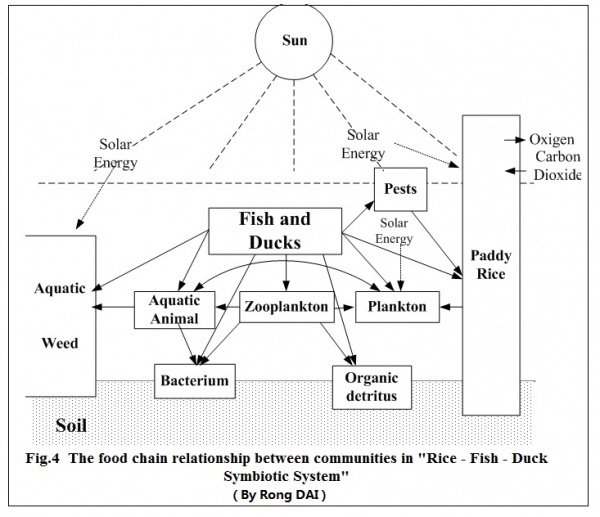Dong People’s Rice-Fish-Duck Symbiotic System in China
15.04.2015
-
SUBMITTED ORGANISATION :
-
College of Life and Environmental Sciences, Minzu University of China; Nanjing Institute of Environmental Science, Ministry of Environmental Protection of China
-
DATE OF SUBMISSION :
-
15/04/2015
-
REGION :
-
Eastern Asia
-
COUNTRY :
-
China (Congjiang County)
-
SUMMARY :
-
Congjiang County is located in the southeast of Qian Dongnan Miao and Dong Autonomous Prefecture of Guizhou Province, China. Dong people have created the "Rice - Fish - Duck Symbiotic System" for thousands of years in this county. In the system, the traditional varieties of glutinous rice seedlings saved by Dong people are used and the fish is also bred in the terrace fields. When the fish grow up to ten centimeter long, the ducklings are put into the terrace field to be raised. The glutinous rice of the system provides shade and organic food for the fish, ducks and other aquatic animals. The fish and ducks play an important role in weeding, cultivation, fertilization, oxygen supply and eating pests etc... This ecological cycle has achieved a very good economic, ecological, social and cultural benefit. "Rice - Fish - Duck Symbiotic System" of Dong People, as one part of China’s traditional knowledge and agricultural culture, has become the protection pilot of FAO Globally Important Agricultural Heritage. This system has strong practical significance and promotional value for solving the problems of the world's agricultural ecological environmental deterioration, farmland and water pollution, agricultural products safety and so on.
-
KEYWORD :
-
Rice-Fish-Duck Symbiotic System, Dong People, Case Study, China
-
AUTHOR:
-
Rong Dai and Dayuan Xue





